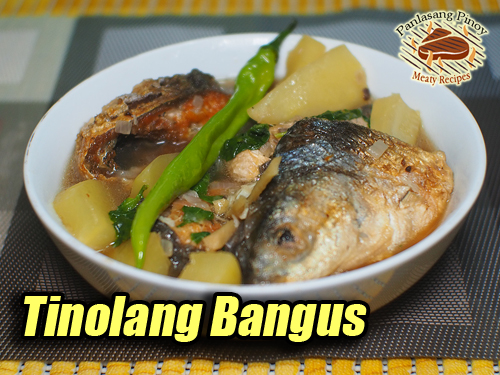How to Cook Tinolang Bangus
Tinolang bangus is a comforting Filipino soup dish made with fried milkfish simmered in a ginger-infused broth with green papaya, long green chilies, and leafy greens.
Servings: 4 servings
Calories: 214kcal
Ingredients
- 1 piece medium size bangus sliced
- 1 small unripe papaya peeled and sliced
- 1 bunch sili leaves
- 2 pcs long green chilies
- 1 inch ginger sliced
- 1 pc onion chopped
- 4 cloves garlic crushed
- salt and pepper to taste
- 1/2 tsp. granulated seasoning e.g. Magic Sarap
- cooking oil for frying and sauteing
Instructions
How to Cook Tinolang Bangus
- Clean the bangus by removing the gills, scales and innards. Then slice it into 4 pcs. Wash and drain and place in a colander then set aside.
- Heat cooking oil in a wok or frying pan about 1 to 2 cups. Fry the bangus until golden brown and the skin is crispy. When done, remove from pan and set aside.
- In the same pan, reduce the oil to 2 tablespoon and sauté ginger, onion and garlic until fragrant,
- Add the sliced papaya and sauté again for 1 minute. Add patis and let it sizzle for a minute without stirring.
- Then add 2 to 3 cups of water and bring to a boil. Simmer for 10 minutes or until the papaya is tender.
- Add in the fried bangus, long green chilies, dahon ng sili, salt and pepper to taste and 1/2 tsp. of granulated seasoning.
- Simmer for 1 to 2 minutes then turn off heat. Serve hot with cooked rice.
